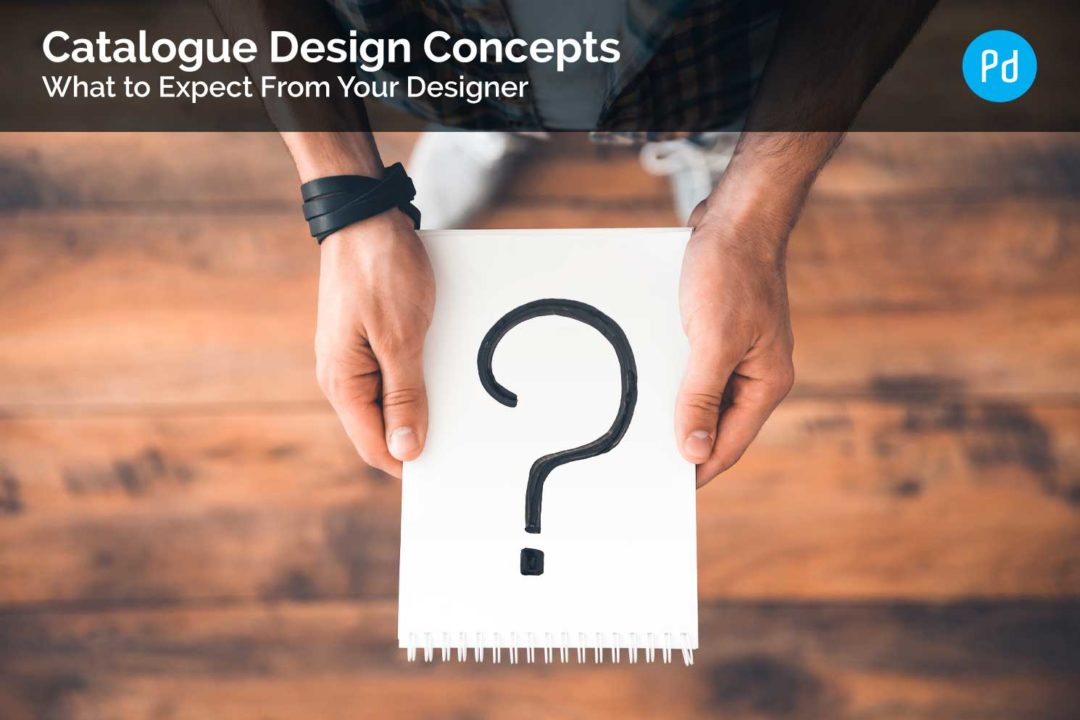Creating high quality Catalogue Design Concepts which are appropriate for your particular requirements and give you the best pay back demands a concentrated process that all designers should follow. Here’s what to expect from your catalogue designer…
Design Research
Encourage your catalogue designer to spend an appropriate amount of time researching your industry and market sector. They will need to understand the demographic of your target audience. Give details of your competitors too and any reference to their literature and catalogues. This will help them create catalogue design concepts and solutions which are far better matched to your business. Your products and services will be shown in a much better light while being more highly attractive to your target customers.
Alternative Design Options
Your designer’s next step would be to work on a variety of design layout options that meet your agreed design brief. You should ask to see designs for a range of different pages that accurately represent the nature of your content. Do not expect your designer to present designs for all your catalogue pages before a selection of pages have been agreed first.
Challenge your designer to make best use of the content text and images to display the information as clearly as possible which will be attractive to your target audience. Based on an agreed scope your designer will help you decide the best size and format for your catalogue and advise the most cost effective route for both the design layout and print production.
Strong Use of Your Corporate Identity
When you see your catalogue design concepts for the first time your corporate identity styling must be evident to you immediately. Ensure your branding elements such as logo, colours and typography, etc., are used consistently. Your catalogue’s differentiating features must be strong and memorable especially when compared against those of your competitors. It must be clearly distinguishable. Above all else the design of your catalogue front cover is particularly important. Give your readers a compelling reason to turn the cover and look inside.
A Clear Grid Structure
Many catalogues need to have a great deal of information associated to the products to help them sell. This is a challenge to designers and the best design solutions are often seen where the page layouts, text and images are displayed in a clean orderly way. Clever use of grid structure helps to keep all the elements on your pages tidy. This will be evident in your catalogue design concepts where the graphics line-up nicely in a consistent pattern. Ask your designer to show evidence of how they have used a grid structure throughout your catalogue.
Legible Text
How easy is it to read the content on your pages? Your catalogue design concepts should show clear style differences between headings, sub-headings, body text, captions and table information. This is controlled with careful combination of fonts styles, sizes and colour. Five or six combinations is probably about the limit before the design begins to fall down. The designer’s skills at handling typography will be tested on a product catalogue more than most other items of literature. If there are too many font style combinations the information may become confusing and much harder to digest.
Use of Colours
As a starting point your designer will most likely choose colours for the design of your catalogue that reflect your existing corporate identity. Other colours that work in harmony with your main corporate colour(s) will be the most logical choice, such as those which are side-by-side on the colour spectrum. In stark contrast complementary colours that are opposite to each other on the colour spectrum will work particularly well together when you want to draw attention to something on the page. I’ve just touched the surface here and if you’re interested more in the psychology of colour and how it effects consumer behaviour, you’ll find this article by CONECTIA very interesting.
Call to Action
Your catalogue design concepts must illustrate how call-to-action messages will be applied. As well as engaging with your catalogue content you will also want to encourage your readers to act in some way, eg., call for more information, go online to buy or visit your store, etc. Having seen a product in your catalogue that solves their problem, a call-to-action should focus on the value it will provide. This is what your reader will get out of following through with the call-to-action.
Design Feedback
This is your opportunity to scrutinise the design closely to make sure it represents your business image accurately. Consider the questions raised in this article. Has your design brief been answered fully? As well as highlighting things that are not quite right, make a point of Have an open discussion about your initial impressions with your designer and be very clear about your favourite design options. This feedback will be helpful to your designer who will take on-board your comments and re-clarify the direction for any further design development that may be necessary.
Design Development
It is not uncommon for clients to ask their designers to revisit designs at least once or twice before they are happy with the final concept solutions. Remember this is the first step in the creative process. Design templates for the various page types need to be agreed first before your designer proceeds to create the print-ready artwork for all the pages of your catalogue.
Need more help with your catalogue?
Here are a few more related, very useful articles which are a must read…
Planning Guide for Catalogue Design
Catalogue Design Content Generation Guide
Artwork and Proofing Guide for Designing Catalogues
Remember to download our free guide for step-by-step tips and advice on creating the perfect brief for your designer.
Want to find out more about the services we offer at Palmiero Design? Feel free to get in touch or request a quote. We look forward to hearing from you!
Professional catalogue designers ready to discuss your brief today. > Request a Quote Now



